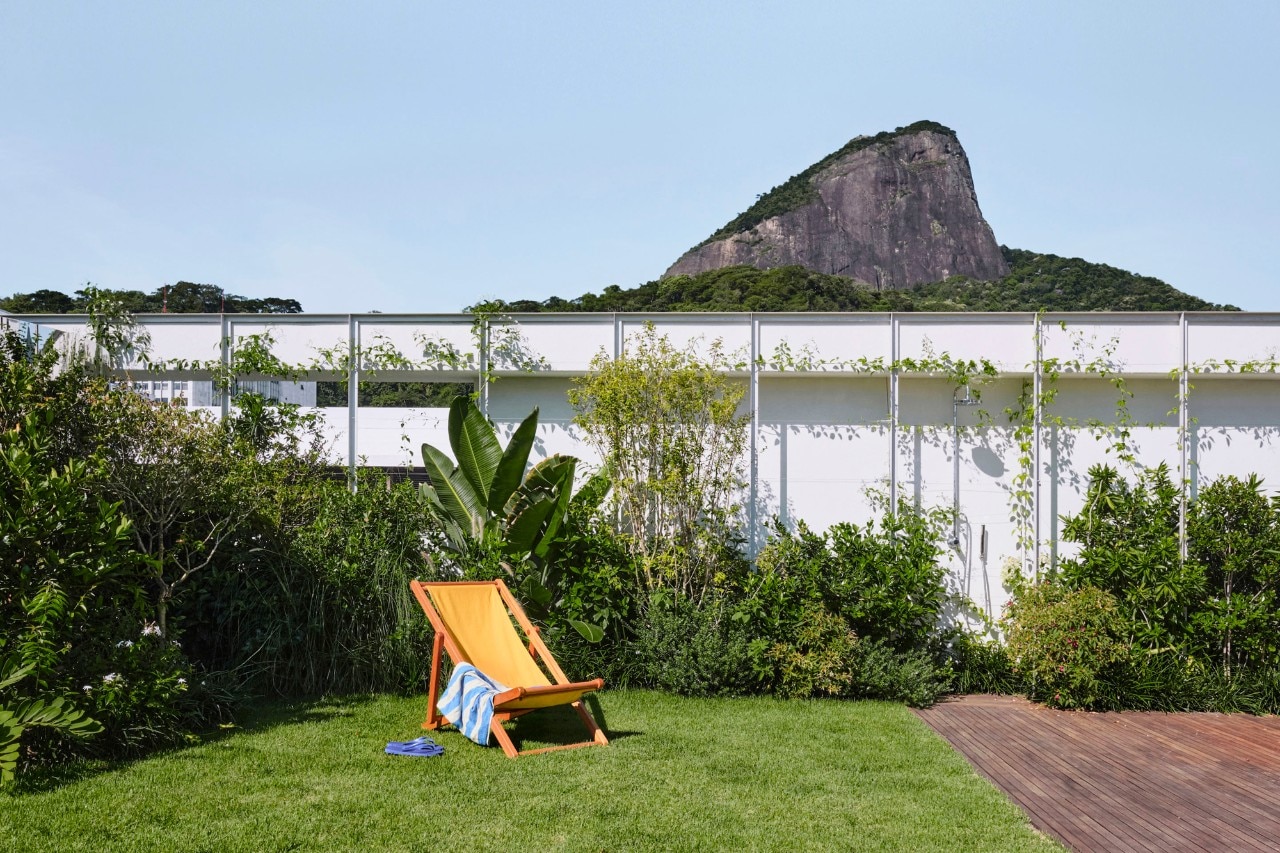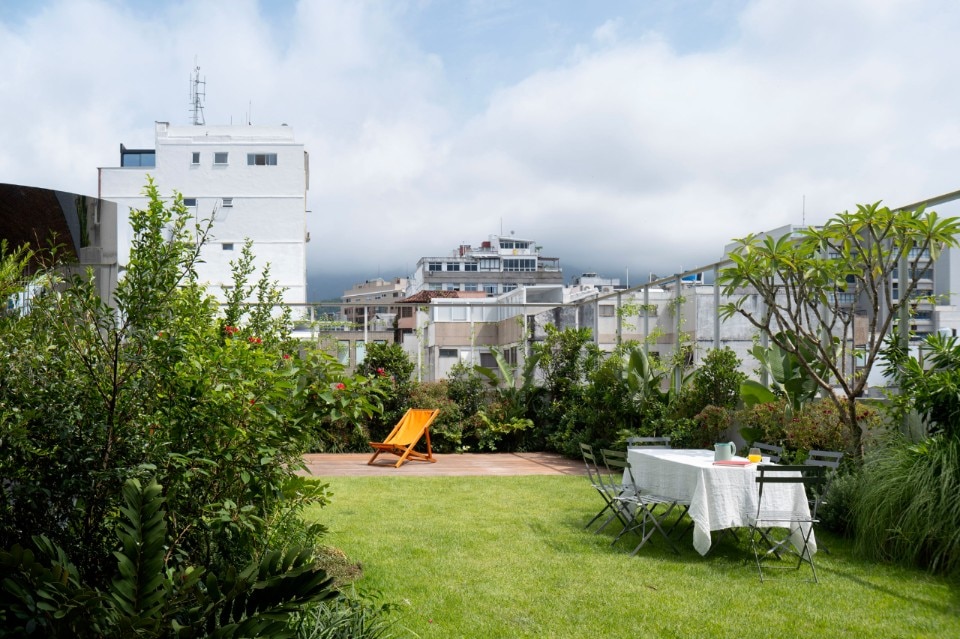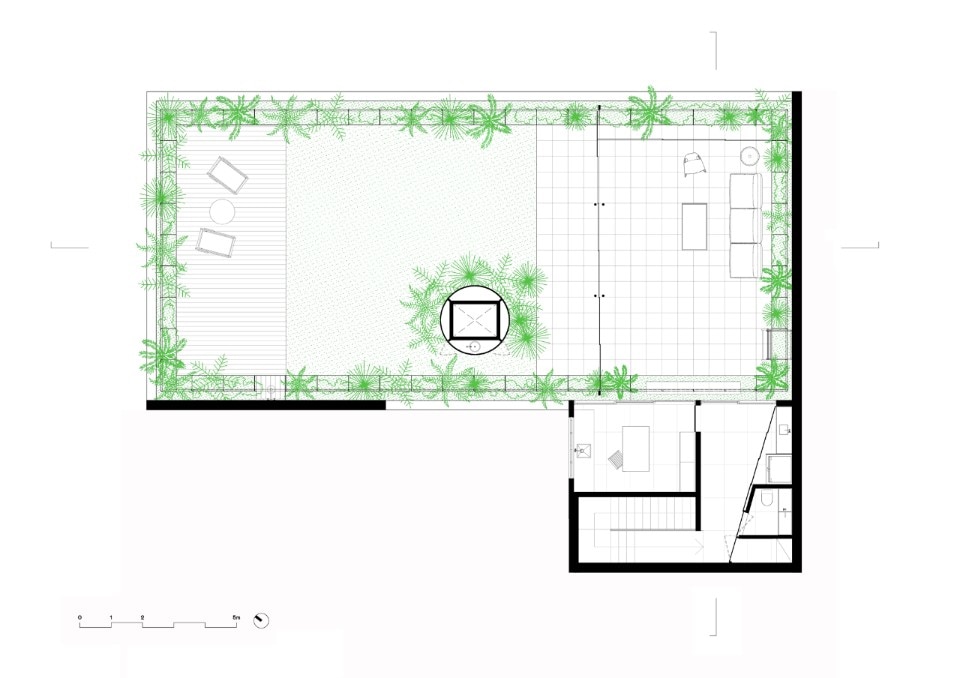In recent decades, in order to limit land consumption, the reuse, transformation and densification of what already exists has been encouraged, and architecture has often responded with “parasitic” design practices: the term must be intended in a positive meaning, of strategies whereby the city grows on itself, relying on the addition of new architectural bodies to pre-existing structures, to which the "parasitic organisms" are linked by necessity (of soil, installations, access...), while remaining formally and spatially distinct.
This is the case of the organism designed by Agencia Tpba and perched on the roof of a multi-storey building in the dense built fabric of Rio de Janeiro, reclaiming a residual space by transforming it into a “non-house” with no specific function other than to offer the luxury (ancient, and today even more precious) of otium.

The intervention concerns a space with an “L” layout that houses a large central room without partitions, connected to an existing access area to the east – with kitchen, services and a small atelier – and overlooking a hanging garden to the north that, as in the Maison de Beistegui by Le Corbusier in Paris (1931), is configured as an open-air room in the heart of the metropolis, with the lawn as the floor and walls framing the sky.
The ethereal volume, bordered by frameless sliding glass windows and punctuated by a slender modular structure of twin columns in mirror-polished stainless steel, supporting a flat glass roof with a wooden grid, evokes Miesian memories, the 1929 Barcelona Pavilion to name the most evident, as for the contrast between the evanescence of the vertical surfaces and structures, and the materiality of the horizontal roof seemingly floating in the void.

In the centre of the roof garden, designed by wooden flooring and planters that extend inside the building, stands a mirrored cylinder that hides the technical volume and a maintenance cupboard and lends, with its sculptural appearance, a vaguely surreal character to this paradise of indeterminacy that survives among the established buildings.
- Project team:
- Thiago de Almeida, Priscila Bellas
- Landscape architecture:
- Rodrigo Oliveira Paisagismo
- Structural engineering:
- Marcio Pompei
- Lighting project:
- Chiaradia+Gayoso
- Construction:
- Osborne Construtora























